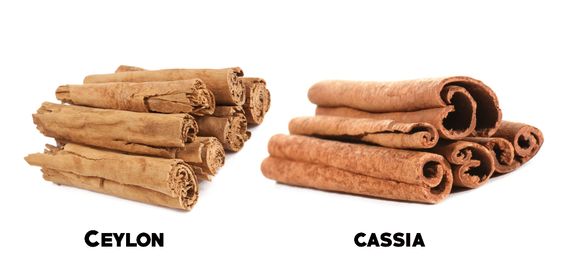Herbs and Spices - Cassia

Cassia
Cassia, also called Chinese cinnamon, spice consisting of the aromatic bark of the Cinnamomum cassia plant of the family Lauraceae. Similar to true cinnamon, cassia bark has a more pungent, less delicate flavour and is thicker than cinnamon bark. It contains from 1 to 2 percent oil of cassia, a volatile oil, the principal component of which is cinnamic aldehyde. Cassia bark is used as a flavouring in cooking and particularly in liqueurs and chocolate. Southern Europeans prefer it to cinnamon, but, in North America, ground cinnamon is sold without distinction as to the species from which the bark is obtained.
Cassia bark is peeled from stems and branches and set aside to dry. Some varieties are scraped. While drying, the bark curls into quills. The colour varies from light reddish brown for the thin, scraped bark to gray for the thick, unscraped bark. Ground cassia is reddish brown in colour. Cassia from China is less aromatic than that from Vietnam and Indonesia. Cassia from all three countries has a sweet, aromatic, and pungent flavour. Vietnamese, or Saigon, cassia is particularly highly esteemed.
Cassia buds, the dried, unripe fruits of Cinnamomum cassia and Cinnamomum loureirii, have a cinnamon-like aroma and a warm, sweet, pungent taste akin to that of cassia bark. The whole buds are added to foods for flavouring. The brown, immature fruit is snugly held in a cuplike, hard, wrinkled, grayish-brown calyx (the whole commonly called a bud) varying in size but ordinarily 0.4 inch (11 millimetres) long, including the calyx tube; the upper part of the bud may be about 0.25 in. in diameter.
Confusion sometimes arises with another group of plants because Cassia is the generic name of an extensive genus of leguminous plants, which, in addition to various other medicinal products, is the source of senna leaves.
Benefits:
1.Antimicrobial action: Cinnamomum cassia tree contains cinnamaldehyde, a chemical that seems to counteract bacteria and fungi.
2.Halting fungal infections:Cinnamomum Cassia oil is used for athlete’s foot, a condition that can occur from walking on communal shower floors and saunas as well as swimming pools. Cinnamomum cassia is a well known and highly regarded antifungal agent.
3.Helps in blood sugar control: Cassia cinnamon contains hydroxychalcone that helps to improve insulin sensitivity. Cassia cinnamon also contains chemicals that may activate blood proteins that increase blood sugar uptake. These effects may improve blood sugar control in patients with diabetes.
Serving way:
It is often used in stewed fruits, especially apples and with mixed spices for pudding spice, pastry spice and mulling spices. In main dishes it is used in curries, pilaus and spicy meat dishes. The whole buds are also good for flavouring these dishes. Dried cassia leaves are the Indian herb tejpat, sometimes erroneously called ‘bay leaves’. Cassia is an ingredient in Chinese five-spice